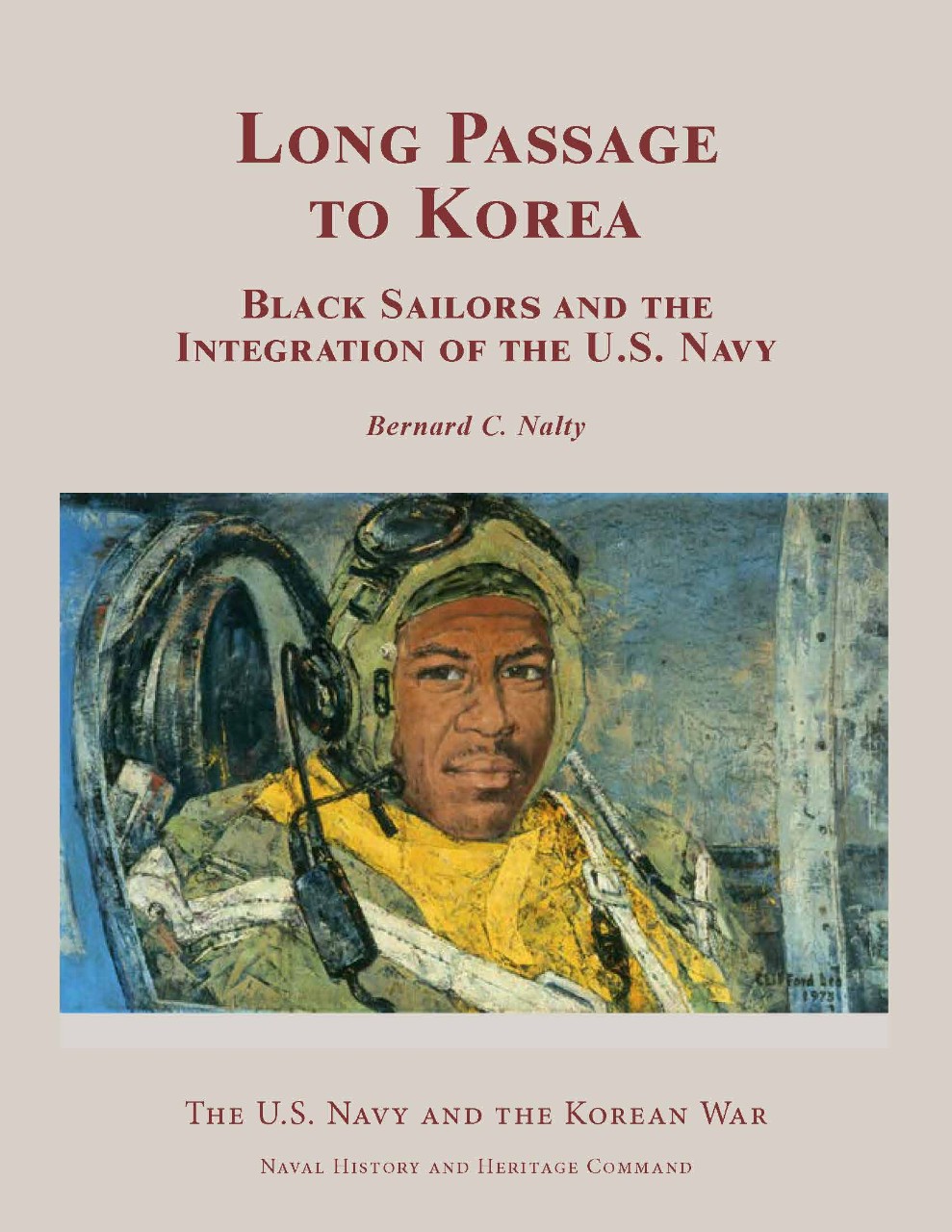Long Passage to Korea
Black Sailors and the Integration of the U.S. Navy
by Bernard C. Nalty, 2003 (original print), 2024 (digital reprint). ISBN 0-945274-48-3 (alk. paper)
Available now for free as a 508-compliant PDF (4.9 MB).
Throughout all of its wars, the recruiting, training, and assignment of African Americans posed a recurring problem for the U.S. government in the employment of manpower because of slavery and the racial discrimination it spawned. As early as the undeclared naval war with France, 1798–1800, the Navy of the United States tapped the reservoir of free Black fishermen and merchant seamen then available in northern seaports. Reliance on racially integrated crews survived beyond the Civil War and the abolition of slavery, only to succumb to the principle of separate but equal, validated in 1896 by the Supreme Court. As racial segregation took hold and the era of Jim Crow began, the Navy separated Blacks from Whites, a task completed by the outbreak of World War I in 1917, and paid the price in lost efficiency to maintain the policy during that conflict and afterward. The unprecedented demands of World War II, however, created pressure for a more rational use of human resources that eroded but did not destroy racial segregation in the Navy. After World War II ended, racial integration lost the headway gained during the last year of the conflict. Japan’s surrender in September 1945 triggered the headlong demobilization of the armed forces of the United States. The outbreak of war in Korea launched another period of rapid growth for the Navy. The new recruits, reservists recalled to wartime active duty, and newly commissioned officers included African Americans who, thanks to President Truman’s directive of July 1948 that ordered the armed forces to integrate, often received better treatment and greater opportunity in uniform than they had encountered as civilians. The Navy that fought the Korean War made a determined effort to carry out President Truman’s racial policy. The campaign had three major objectives: to increase the number of African Americans, especially officers but also enlisted men, and make full use of their abilities; to encourage Black Sailors to choose specialties other than steward duty; and to mitigate the effects of racial segregation, which prevailed by law or custom throughout much of the nation, on the Navy’s African Americans in their contacts with civilian society. During the Korean conflict, the Navy demonstrated a commitment to equal treatment and opportunity, regardless of race, that took root and flourishes today.



